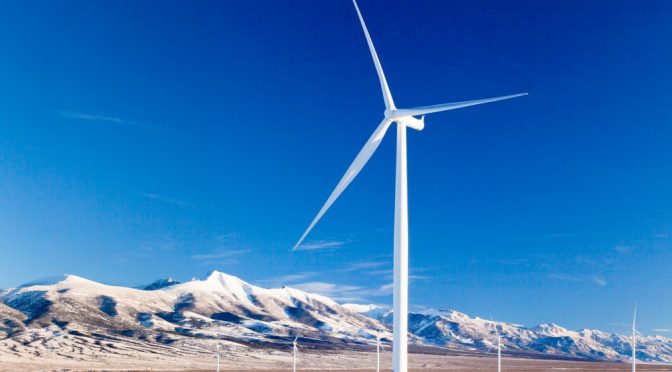The average daily wind speeds are in much of the world after approximately 30 years of gradual deceleration, which has been a boost for wind energy, according to a new study published in the journal ‘Nature Climate Change’.
The research, led by a team from Princeton University (United States), shows that wind speeds in the northern regions of the mid-latitudes have increased by approximately 7% since 2010.
The findings mark an inversion of the pattern of decreasing winds in these regions since the 1980s, a phenomenon known as global terrestrial stillness. Focusing on the regions of North America, Europe and Asia, where wind power is on the rise, the researchers analyzed wind speed records collected between 1978 and 2017 from more than 1,400 weather stations.
They show that, although wind speeds decreased by approximately 2.3% per decade from 1978, since 2010 wind speeds have increased at a rate almost three times faster.
The research, which only examines regional averages, does not examine how the increase in wind speed could affect the severity of storms, which has also been increasing.
Thus, the team studied the possible underlying causes of global terrestrial stillness and its reversal. While changes in urbanization and vegetation have been proposed as contributors to global terrestrial stillness, these trends have not been reversed since 2010, notes Zhenzhong Zeng, who had the study as a postdoctoral researcher working with Eric Wood, emeritus professor at Princeton.
Zeng and his colleagues will use statistical methods to test associations between variations in wind speed and a variety of well-characterized oscillations of the oceanic atmosphere.
The oscillations of the oceanic atmosphere, which alter heat and pressure distributions, have long been understood to drive ocean wind speeds, and this study demonstrated the overall relationship between oscillations and wind speeds on land.
The specified analysis that in each region of the globe, the specific oscillations of the large-scale oceanic atmosphere, which are driven by many factors, including uneven warming of the Earth’s surface in different regions, were likely explanations of the trends observed in wind speeds
Extending their findings to wind power generation, researchers estimate that a typical wind turbine that receives global average wind obtained approximately 17% more energy in 2017 than in 2010. And using climatic indexes to project future wind speeds, they predicted 37% increase by 2024.
Wind speed trends may explain much of the United States’ increase in wind energy production efficiency from 2010 to 2017, while technological innovations in wind turbines may have played a minor role than is often Zeng assumes, who is now an associate professor at the University of the South of Science and Technology in Shenzhen (China).
“We predict that the increasing trend of wind speed will continue for 10 years, but we also show that because this is affected by the oscillations of the oceanic atmosphere, maybe a decade later it will revert again,” he added.
And since the life of a wind turbine is usually 20 years maximum, having reliable projections of wind speed in particular places could be crucial to make smart investments in wind energy and increase the global share of renewable energy.
“Knowing the possible downward trends in long-term wind speeds can be very useful for planning the future wind energy infrastructure – notes Charles Meneveau, Professor of Mechanical Engineering at Johns Hopkins University who was not involved in the study– This type of research, which combines geosciences and engineering to dilute phenomena of great social importance, is timely and increases our understanding of the close connections between climate and society. ”


